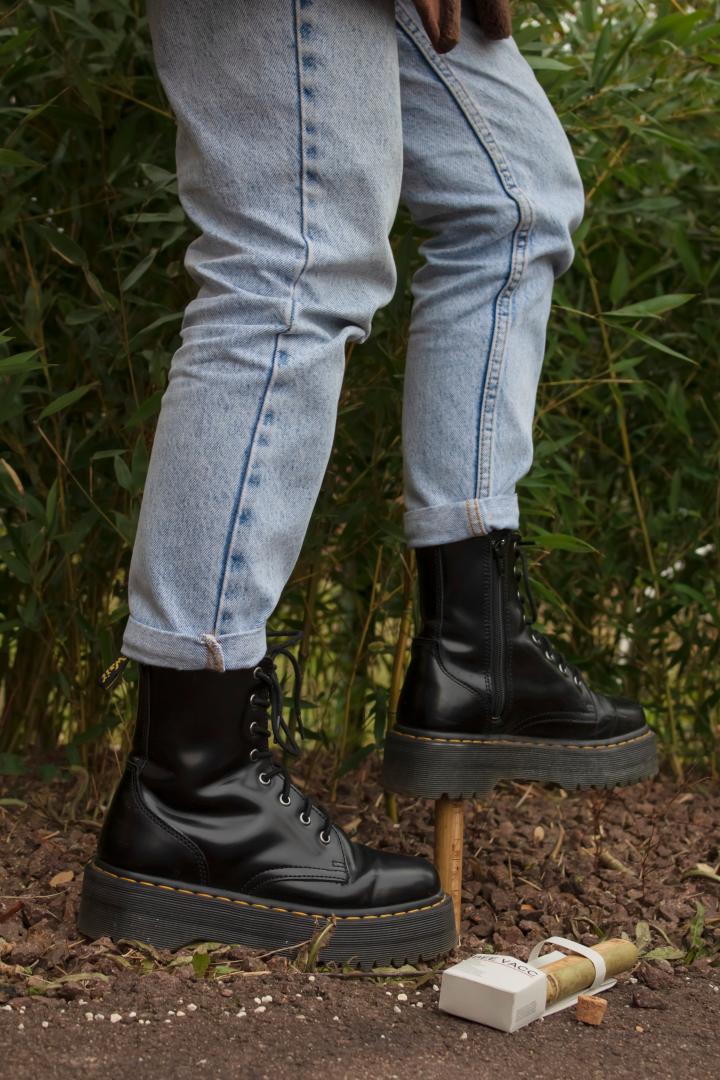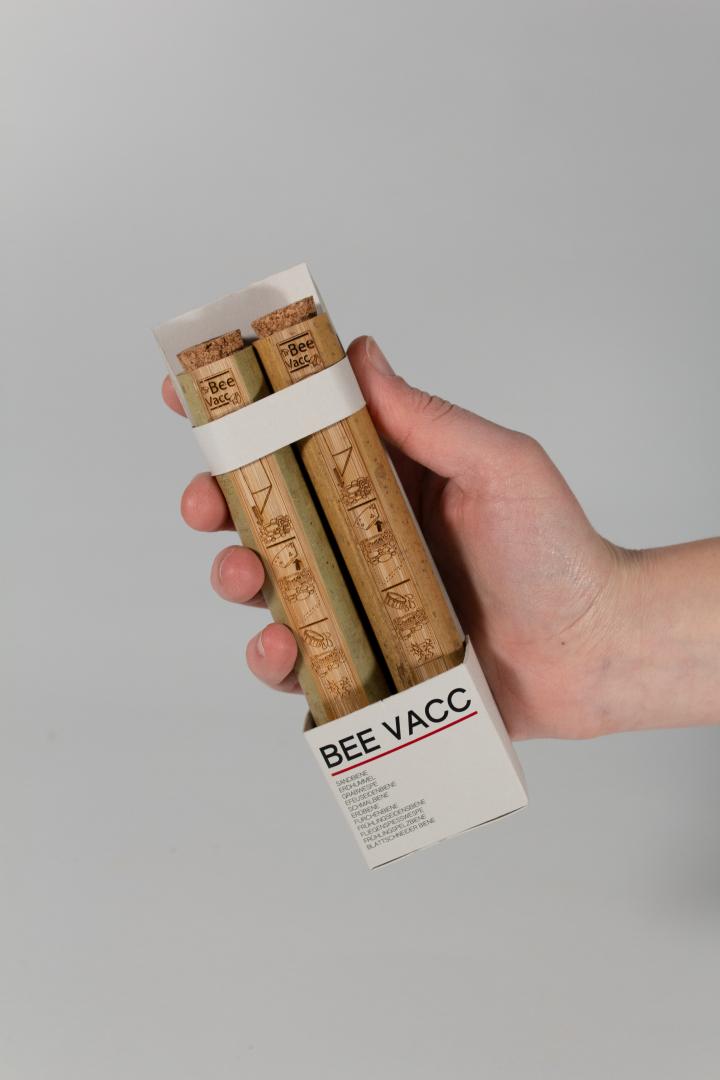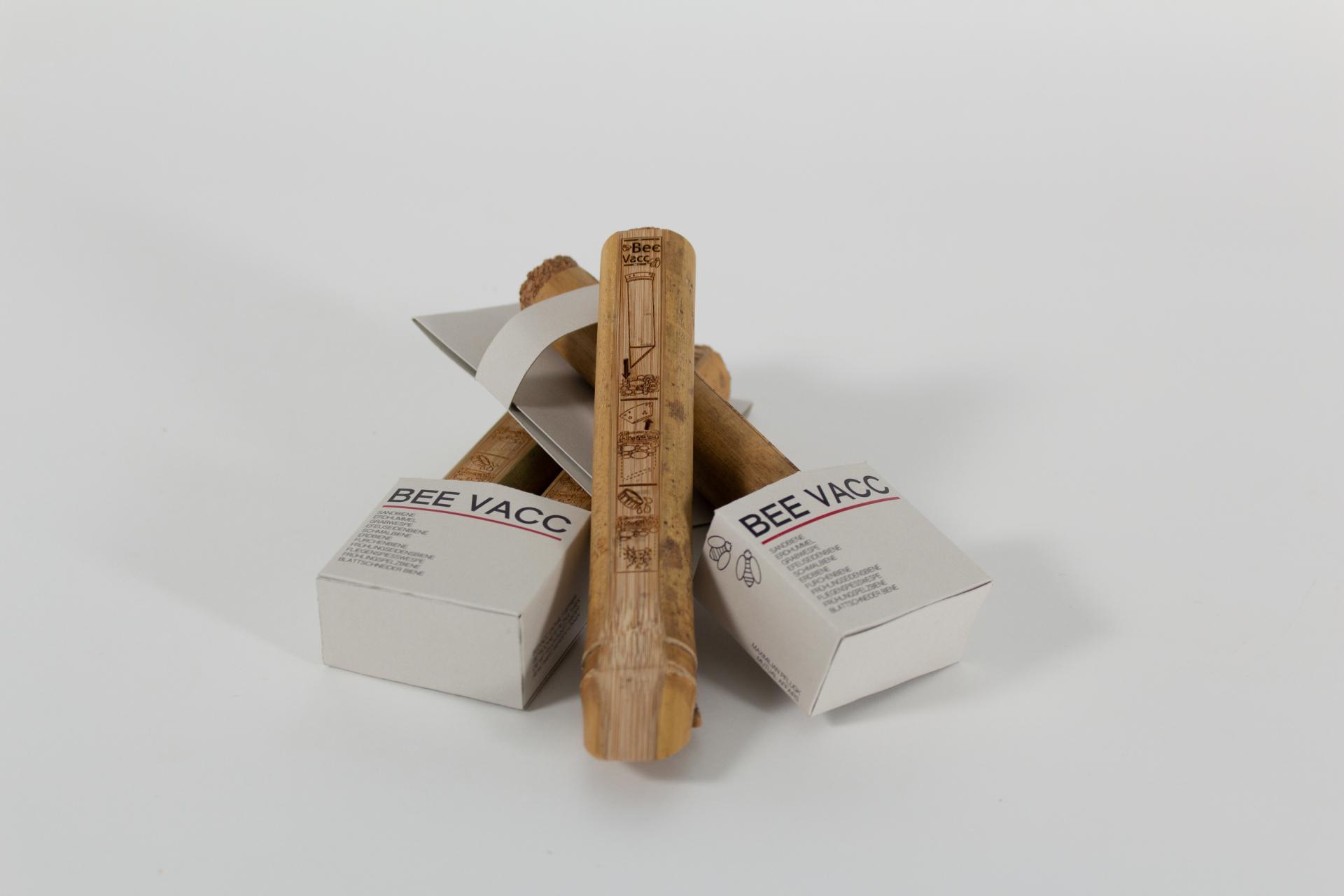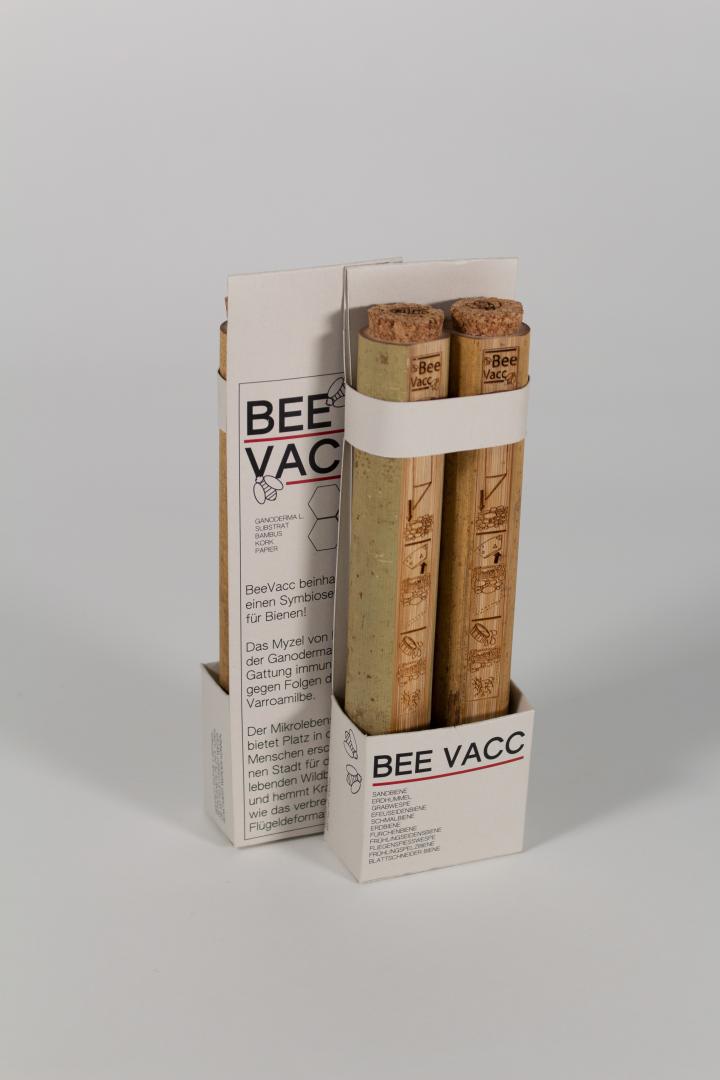BeeVacc
Basic information
Project Title
Full project title
Category
Project Description
BeeVacc contains a potential symbiotic partner for wild bees!
The microhabitat provides space in the human-developed city for the solitary wild bees and inhibits diseases such as the deformed wing virus.
Fungi's mycelium of the Ganoderma genus can immunize bees against consequences of the varroa mite. It is too big for being a parasite of wild bees, but they can get infected by visiting the same flowers as infested honey bees. The difference is, one is bred for numbers, the other one is not.
Geographical Scope
Project Region
Urban or rural issues
Physical or other transformations
EU Programme or fund
Which funds
Description of the project
Summary
Honey bees, which are often infested by the varroa mite
transmit diseases to wild bees and other insects in their surrounding
by seeking out the same flowers as a food source. The virus attacks larvae in the developmental stage and usually leads to the death of the brood cell or the entire offspring before complete transformation. Mycelium from fungi of the Ganoderma genus can limit virus infestation if necessary. Physical contact occurs during digging and cleaning, as well as oral ingestion. Hyphae surrounding pupated larvae, kill the viruses.
Bee Vacc adapts the natural behavior of the largest wild bee found in Central Europe and makes it available to smaller relatives of the species. The blue wood bee prefers to nest in dead wood infested with white rot fungi, or in the fruiting bodies of the Ganoderma genus itself. They help the bees to decompose wood and strengthen the brood in case of virus attacks. Surviving bees are able to pass on an attenuated form of the virus in an RNA sequence and thus protect their offspring.
The majority of wild bees live solitarily and nest in the soil. Inside of BeeVacc is a sand-clay mixture with a hint of wood flour. Suitable for a lot of wild bee species and also for the lyophilized Ganoderma fungi culture at the bottom of the microhabitat. It can be reactivated by puring a lid full of water inside after setting it up in the ground.
Key objectives for sustainability
My concept is to include two living symbiotic partners. This can provide sustainable use over time. An object transforms during usage into a micro habitat and leaves no trace. All components used should be 100% natural products and completely degradable by the mycelium of the fungus.
A study on immunization of honey bees aroused my strong interest*. It was noticed that especially extracts obtained from fungi of the Ganoderma genus have a positive effect on the condition or survival rate of honey bees. Especially the larvae, which are still in the brood cells and are particularly affected by the viruses, are protected and strengthened. The rate of deformed offspring and dead adults was significantly reduced.
The pest under investigation is the Varroa mite. It transmits diseases such as wing deformation virus, weakens larvae, and feeds on the blood of adults.
Wild bees are generally too small to be affected by the mite itself. However, they can be infected if the same flower is visited that was previously used by a sick honey bee. Since they do not live in colonies but solitarily in the soil, feeding a large amount of bees at the same time is not possible. Habitats are usually used by bees for several years, so it makes sense to start there and integrate the fungus in a symbiotic relationship. Once the bees have immunized themselves, they can pass on the mRNA codes to their offspring and inoculate them.
Key objectives for aesthetics and quality
The user experience of the product is to be described in several parts.
The first eye contact still takes place while in the packaging, which is why it is important that this explains its content in its function. Be it through graphics on the front, as well as a factual text on the back. The packaging can be printed, plotted and folded on one side.
Typography is kept strict, the appearance is based on medical product lines, with a big cut-out on the front where the product can be seen clearly.
This play with a sterile aesthetic in combination with a natural product invites haptic exploration. It arouses curiosity and creates the idea of a consequence whose function is trusted. The large opening on the front provides a glimpse of the actual object.
If taken out of the packaging, it lies pleasantly heavy in the hand and one recognizes that it is sharpened at the bottom. Probably easier to stick it into the ground than expected. On the flat ground side of the bamboo, the instructions are laser engraved and quickly deciphered internationally. In addition, it can be well understood without its packaging.
The real closeness to the object, however, comes when it is inserted into the ground. Depending on where you want to place your microhabitat, it is easier or harder to find a good technique. Do you turn it like a drill? Is simple pressing enough or does it need to be driven in with the foot? The natural look ensures an uninhibited approach to the product, which is also appealing for usage in a group.
Key objectives for inclusion
Habitats for insects in the urban context is a topic that some municipalities are dealing with or have a general interest in. BeeVacc can be communicated well in schools with children and young people, since the knowledge conveyed can be applied directly afterwards. By finding a suitable place and reactivating the mushroom, a direct connection to the topic is created, which is missing when looking at an insect hotel.
Various nature alliances can communicate knowledge in a much more concrete and applied way on field trips and place greater emphasis on the fact that in our nature it is really possible to shape, help and design with living actors. But it should also be as easy as possible for private individuals to create symbioses in their environment and offer more ecological niches.
Which parts of our environment are actually in contact with each other and which ones could still be linked? Where can I allow more space for nature in my personal setting? These are questions that can arise during use. The exclusive use of renewable raw materials can in some cases be reflected in the product price, but not in this example. Due to the high availability of the materials, BeeVacc can be provided inexpensively to all municipalities, as well as private individuals. For private use in small quantities, the packaging with two pieces of content is intended, for larger quantities the delivery comes without packaging, because the instructions are burned on the object.
Physical or other transformations
Innovative character
BeeVacc is a good way to make finer structures of our environment tangible. Many people know that insects are important and fungi are not plants, yet it is difficult to reproduce more accurate information. It is important to point out that there are deep differences between the honey bee and the wild bees. The one is bred by humans and used for honey production. It is hardly noticed that the other species fills and animates our environment and is helplessly exposed to infections. Thereby, there live about 585 wild bee species in Germany alone.
It also draws attention to the medicinal benefits of fungi in medicine, where further potential can be seen in the near future.
Visually, it appeals to a wide range of people. Young people are intrigued by the laser engraving and the idea of using living products. Adults are won over by its simple, competent appearance. Above all, it seems easy to do something about the problem with bees in a stylish way.
Due to low production costs and the use of easily accessible materials, in my case local bamboo, the product price can be kept low. Conversely, interesting for smaller communities such as schools, kindergartens, municipalities, nature parks or various initiatives that are interested in this and want to do educational work with an effect.
In addition, the function is not bound to the object, but only finds its place of development there. It can also be tested and used in a different scale at suitable locations.




